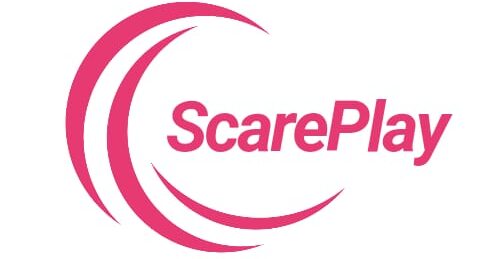If you’re looking to expand your language skills or just want to know how to greet Spanish-speaking friends and colleagues, knowing how to say “hi” in Spanish is a great place to start. Greetings are fundamental in any language, and understanding the different ways to say hi in Spanish can enhance your communication and help you connect with others more effectively. This guide will cover the most common ways to say hi in Spanish, when to use them, and additional tips for making a positive impression.
Basic Ways to Say Hi in Spanish
Hola: The Universal Greeting
The most straightforward and widely recognized way to say hi in Spanish is “hola.” This greeting is versatile and used in both formal and informal contexts. Whether you’re meeting someone for the first time or greeting a friend, “hola” is an appropriate choice.
- Formal Use: When greeting someone in a formal setting, such as a business meeting or a formal event, “hola” remains suitable. It’s a universal greeting that doesn’t carry any particular formality or informality.
- Informal Use: Among friends, family, or people of the same age group, “hola” is perfectly casual. It’s an easy and friendly way to start a conversation.
¿Qué Tal?: A Casual Greeting
Another popular way to say hi in Spanish is “¿Qué tal?” This phrase translates to “What’s up?” or “How’s it going?” and is commonly used in casual conversations. It’s a friendly and informal way to ask how someone is doing.
- When to Use: Use “¿Qué tal?” when you’re greeting someone you know well or in informal settings. It’s a great way to show interest in the other person’s well-being and open up a dialogue.
- Response: The typical response to “¿Qué tal?” can be a simple “bien” (good) or “más o menos” (so-so), depending on how you’re feeling.
¿Cómo Estás?: A More Personal Greeting
For a more personal touch, you can use “¿Cómo estás?” which translates to “How are you?” This greeting is a bit more specific than “hola” and shows that you’re interested in the other person’s feelings.
- When to Use: “¿Cómo estás?” is suitable for informal settings and is often used when you have an established relationship with the person. It’s an excellent choice for friends and family.
- Response: Typical responses include “estoy bien” (I’m fine), “estoy mal” (I’m not well), or “más o menos” (so-so), depending on how the person is feeling.
Formal Ways to Say Hi in Spanish
Buenos Días: Good Morning
When greeting someone in the morning, “buenos días” is the appropriate phrase. It means “good morning” and is used until around midday.
- When to Use: Use “buenos días” in formal settings, such as at work or in professional contexts, and when you want to be polite. It’s also a common greeting in Spanish-speaking countries throughout the morning hours.
Buenas Tardes: Good Afternoon
After noon, “buenas tardes” is used to say “good afternoon.” This greeting is appropriate from around midday until the early evening.
- When to Use: Use “buenas tardes” in formal situations or when meeting someone during the afternoon hours. It’s a respectful way to acknowledge the time of day and show politeness.
Buenas Noches: Good Evening
In the evening or night, “buenas noches” translates to “good evening” or “good night.” It’s a versatile phrase used both as a greeting and a farewell.
- When to Use: Use “buenas noches” when greeting someone in the evening or at night. It’s suitable for both formal and informal settings and is a courteous way to acknowledge the time of day.
Additional Spanish Greetings and Phrases
¿Cómo Le Va?: How’s It Going?
“¿Cómo le va?” is a more formal way to ask “How’s it going?” and is often used in professional or polite contexts. It shows respect and is a way to inquire about someone’s well-being in a more refined manner.
- When to Use: This phrase is appropriate in business settings or when speaking with someone you don’t know very well. It’s a polite way to engage in conversation.
Encantado/Encantada: Nice to Meet You
When meeting someone for the first time, “encantado” (if you’re male) or “encantada” (if you’re female) means “nice to meet you.” This phrase is used to express pleasure in making someone’s acquaintance.
- When to Use: Use “encantado” or “encantada” during introductions or in formal situations where you’re meeting someone for the first time. It’s a polite and friendly way to start a conversation.
Cultural Considerations
Understanding Regional Variations
Spanish is spoken in many countries, and greetings can vary by region. For example, in some places, you might hear “¿Qué pasa?” (What’s happening?) or “¿Qué hubo?” (What’s up?). Understanding these regional variations can help you communicate more effectively and show cultural awareness.
Context Matters
The context in which you use these greetings is important. Formal greetings are best used in professional or respectful settings, while informal greetings are suited for friends and casual interactions. Adapting your greetings to the context helps you make a positive impression and connect better with others.
Conclusion
Knowing how to say hi in Spanish is a valuable skill that can enhance your communication with Spanish-speaking individuals. From the simple and versatile “hola” to more specific phrases like “¿cómo estás?” and “buenas tardes,” each greeting has its place depending on the context and formality of the interaction. By understanding these various ways to greet someone, you can navigate conversations with ease and show respect and friendliness in your interactions. Whether you’re traveling, working, or socializing, these greetings will help you connect with Spanish speakers and enrich your language experience.



